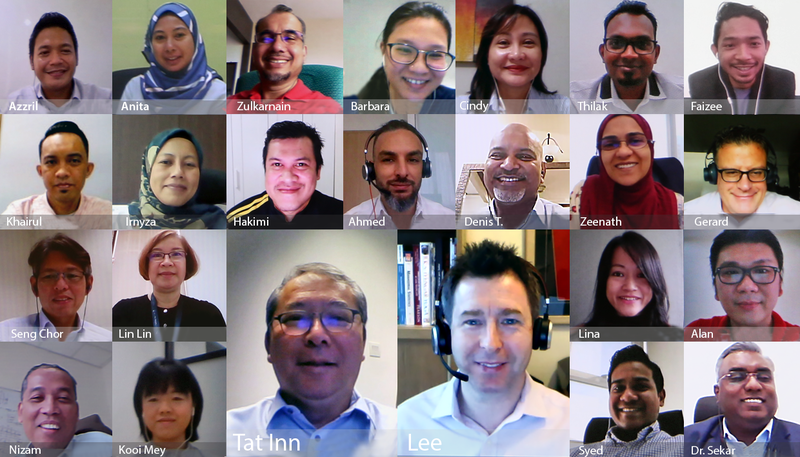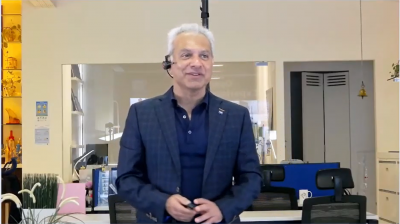
The world has shifted drastically with the pandemic. With its lingering effects, more people are relying on financial technology with its reliable and contactless transactions to meet their needs. The use of Advanced Analytics and AI in fintech has become critical to ease-of-use and security in the context of AML. Usage of AA and AI allows for risk mitigation as well as cost-efficiency; saving investigators’ time in tracking activity that is seen as a potential threat.
The latest OpenGovLive! Virtual Breakfast Insight on 8 September 2020, looked at how financial institutions from Malaysia can apply real-world AI and advanced analytics applications to ensure a world-class integrated banking system that has comprehensive risk management, efficient fraud anticipation and complete regulatory compliance with an eye on bettering customer experience and improving enterprise profitability.
A comprehensive risk assessment and understanding is a must for financial institutions

OpenGov Asia Group Managing Director and Editor-in-Chief, Mohit Sagar, opened the session by observing that the world has become chaotic and the status quo been disrupted.
In these turbulent times, he stressed it is critical to ask key questions: How do we stay ahead of the curve? How do we keep safe? How do we stay compliant?
These questions become more pertinent and urgent when bad actors are evolving rapidly and becoming increasingly sophisticated.
Being compliant is just the first step. Mere check-box implementation could possibly make organisations more vulnerable as it is a broad, general framework.
Ideally, organisations need to have a comprehensive risk assessment and understanding of their organisation and their context – not an easy nor simple undertaking.
Given the complexity and finesse required, it is best to find the right partners to ease through the process of augmenting a corporate’s existing AML system.
Augmenting and not replacing existing AML capabilities is the priority

After Mohit’s introduction, Managing Director, SAS Malaysia, Cheam Tat Inn, explained that his organisation’s analytics solutions have been used across different parts of the banking landscape.
They have been deployed to enable digital transformation, enhance customer experience, improve risk management and strengthen fraud and security intelligence.
He added that the SAS Solutions optimise and enhance existing AML capabilities and not replace them entirely.
Ahmed Drissi, Anti-money Laundering Lead, APAC, SAS, joined Cheam to give weightage to the need for external expertise. He opined that financial companies need to invest in Machine Learning and AI to automate and speed up the onboarding process.

He showed the delegates a graph that depicted clearly how some regional and tier-1 banks had improved their operational efficiency. Expounding on their proposition, he explained that the SAS Solution had several key capabilities:
- Transaction Monitoring
- Customer Risk Rating/Due Diligence
- Customer screening
- Transaction screening
- AML & CTF Investigation
- Reporting
These key capabilities can be applied to an organisation’s existing AML systems to improve and strengthen its ability to combat financial crimes through advanced analytics.
Entity resolution in the context of AML will help in the reconciliation and gathering of normal multiple data and uncover hidden relationships through the analysis in customer’s attributes. This is important to establish a single view of the customer. It will help investigators have a holistic view of a customer.
Ahmed re-emphasised that SAS’s goal is not to replace existing AML capabilities but to optimise and/or augment them as part of segmentation.
Challenges in AML regulation from an HSBC lens

After Ahmed, Lee Ashmore, Global Head of Anti-Money Laundering Technology & Head of Compliance IT-APAC gave a presentation on the challenges on AML regulation through an HSBC perspective.
Lee explained that customer segmentation models can be complex and can take a long time to develop in HSBC.
He shared that there were problems they encounter when a high number of false positives are flagged while using a rule-based TM that needs to be addressed
Lee was of the opinion that it might be difficult to transition from one system to another in their current situation. Fine-tuning systems are time-consuming and thresholds can be severely impacted by market volatility through external events such as COVID-19.
After these insightful presentations, the virtual insight moved into a time of interaction through OpenGov Asia’s polling session.
On the first question asked the delegates where they were in their current AML journey, close to half (44%) said that they have replaced their current AML solution in the previous year.
While discussing answers, a senior executive from a prominent bank in Malaysia shared that they shared their solution about 2 years ago, but are still facing some challenges including false positives, calibrations etc. He also shared that it is an ongoing journey for them, and they are looking to incorporate AI in their AML solution.
Interestingly, in the last session with Singapore-based delegates, for the same question, 62% answered that they were looking for technology that would complement their existing AML solution.
The second poll question asked if the current AML platform/solution provides real-time screening capabilities. Over 48% confirmed their platforms can only screen transactions by batch while 44% said that their AML platform has real-time screening in place.
A delegate reflected that batch screening is appropriate for more complex non- sanction transactions. But for screening sanctions, it should be done real-time. However, ideally, it would be to have a combination of both which is something new to explore.
The third asked about the main challenges that delegates are facing during the AML investigation process. A majority of them (38%) felt the lack of data/insight around customers, accounts and entities is the main problem.
On this one of the delegates shared an interesting reflection. She shared that the major issue is customer information not being updated. When the information is not updated, the risk profiling and mitigation also turns out to be inaccurate. So even when the claims and transactions are not actually high-risk, they seem suspicious.
On the final question on the extent to which organisations are incorporating AI/ML in their risk and compliance programs, half of our audience (50%) voted that they are still evaluating AI and ML before actually incorporating it.
Ahmed shared that it is good to see that majority of organisations were in different stages of their adoption cycle. They have either already adopted it or are evaluating it to understand its benefits. In the same vein, Ahmed brought the session to a closing where he thanked the delegates for the great insights they had all shared.
He closed by reminding them that AI/ML are not plug-and-play solutions that replace current solutions. They augment existing capabilities and strengthen existing systems. Further, SAS has worked hard to create a way of implementing their solution that can be customised to each organisation’s specific requirements and context.
The entire session, with the deep interaction among delegates and experts, led to an intense time of discovery and learning. Advanced Analytics, AI and AML capabilities can be a great tool in strengthening existing systems to combatting financial cybercrime and fraud – activities that may pose high-risk to customers and that can seriously affect an organisation’s credibility.


















